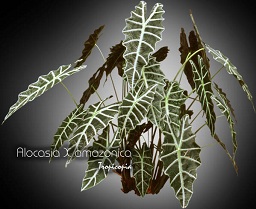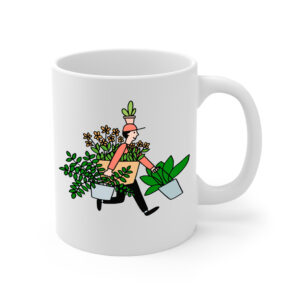Table of contents
Elephant ear

Latin Name: Alocasias X Amazonica
Category: Other
Family: Araceae
Origin: Hybrid
Climate: Tropical humid
Growing Zones: 11
Care Instructions
The Elephant ear (Alocasias X Amazonica) is a tropical humid plant that originates from Hybrid. This other plant belongs to the Araceae family and is well-suited for growing in USDA zones 11.
Complete Care Guide for Elephant Ear (Alocasias X Amazonica)
Watering Requirements
The Elephant Ear plant, known scientifically as Alocasias X Amazonica, thrives in consistently moist soil. It is essential to water the plant regularly, ensuring that the top inch of soil remains damp but not soggy. Overwatering can lead to root rot, so it’s crucial to allow the soil to dry slightly between waterings. During the growing season, typically from spring to early fall, you may need to water more frequently, about once a week, depending on the humidity and temperature of your environment. In the winter months, reduce watering as the plant enters a dormant phase, allowing the soil to dry out more between waterings. Always use room temperature water to avoid shocking the plant.
Light Conditions
Elephant Ear plants prefer bright, indirect light to thrive. Direct sunlight can scorch their large, lush leaves, leading to unsightly brown spots and damage. Ideally, place your Alocasia in a location where it can receive filtered light, such as near a window with sheer curtains or in a well-lit room. If you notice the plant becoming leggy or the leaves losing their vibrant color, it may be a sign that it needs more light. Conversely, if the leaves are turning yellow, it could indicate that the plant is receiving too much direct sunlight. In low-light conditions, the plant may survive but will not grow as vigorously.
Soil Preferences
For optimal growth, Elephant Ear plants require well-draining, rich soil. A potting mix that retains moisture yet allows excess water to escape is ideal. You can create a suitable mix by combining standard potting soil with perlite or orchid bark to enhance drainage. Additionally, incorporating organic matter such as compost can provide essential nutrients. Fertilization is important during the growing season; use a balanced, water-soluble fertilizer every 4-6 weeks to promote healthy growth. In the fall, reduce fertilization as the plant prepares for dormancy.
Pests and Diseases
Elephant Ear plants can be susceptible to common pests such as spider mites, aphids, and mealybugs. Regularly inspect the undersides of leaves for signs of infestation. If you notice any pests, treat the plant with insecticidal soap or neem oil, ensuring to cover all leaf surfaces. Additionally, keep the humidity levels high, as dry conditions can encourage pest problems. Diseases such as root rot and leaf spot can occur if the plant is overwatered or if water sits on the leaves. To prevent these issues, ensure proper watering practices and provide good air circulation around the plant.
Special Care Tips
To maintain the health and beauty of your Elephant Ear plant, consider the following special care tips: First, regularly wipe the leaves with a damp cloth to remove dust and improve photosynthesis. This also helps to prevent pest infestations. Second, during the growing season, you can occasionally mist the leaves to increase humidity, which is beneficial for the plant’s overall health. If you live in a region with cold winters, consider bringing your Elephant Ear indoors to protect it from frost. Lastly, be mindful of the plant’s size; Elephant Ear can grow quite large, so ensure it has enough space to spread out and consider repotting every couple of years to refresh the soil and provide room for growth.








